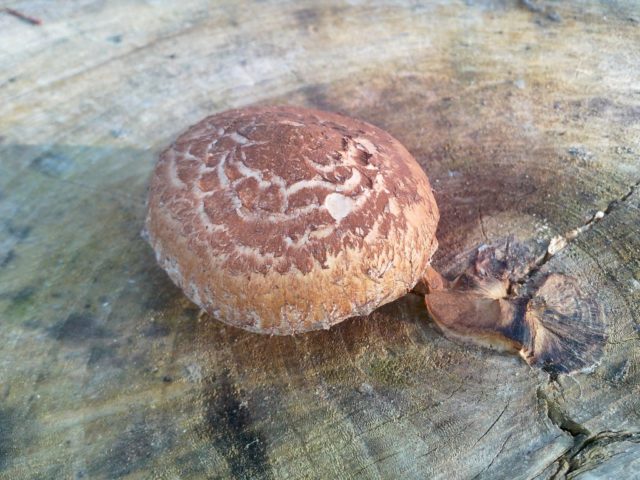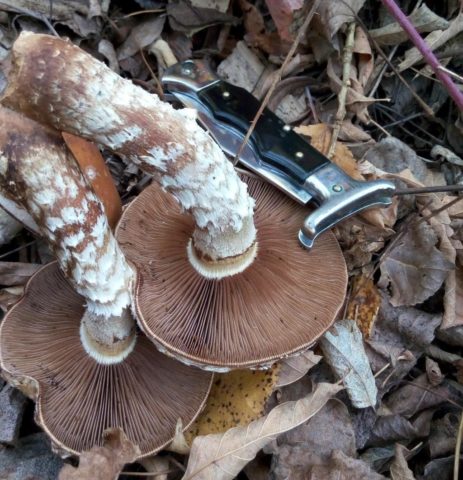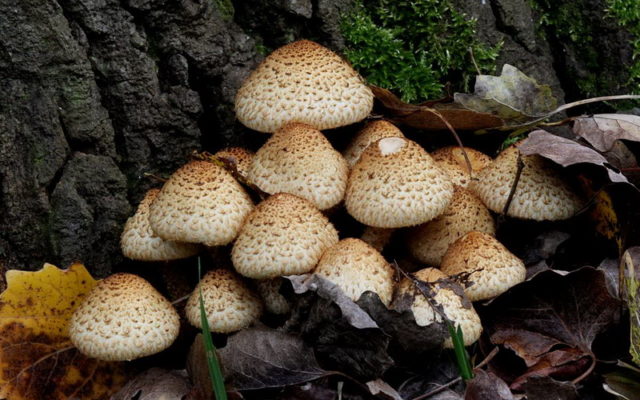Content
Poplar scale is an inedible representative of the Strophariev family. The variety is not considered poisonous, so there are lovers who eat them. In order not to be deceived in the choice, you need to be able to distinguish them by varietal descriptions, view photos, know the place and time of growth.
What does poplar flake look like?
The species received its name for the numerous scales covering the fruit body, as well as for the peculiarity of growing, bearing fruit on the trunks and roots of poplar. Acquaintance with poplar flake must begin with external characteristics.
Description of the hat
The variety has a convex hat measuring 5-20 cm, which straightens over time and acquires a flat surface. The yellow-whitish surface is covered with fibrous pointed scales, they completely disappear with age. The flesh is white and soft. In young specimens, it has a sweetish taste, in old ones it is bitter.
The bottom is lamellar, gray-whitish plates partially grow to the pedicle. In young representatives, the plates are covered with a light film, which eventually breaks through and descends from top to bottom. The ring is absent in adult specimens.
Leg description
The stem is short and thick, up to 10 cm long, about 4 cm thick. The fruit body is fleshy, fibrous, with a pronounced malt smell. The cylindrical stem is covered with dense large scales, which disappear over time.
Is it possible to eat poplar flakes or not
This specimen belongs to inedible, but not poisonous species. Since it has a delicate flesh and a malty smell, the mushroom has its fans. Poplar flakes can be cooked after long boiling. Delicious stews and fried foods are made from it. But since the variety is inedible, it is not recommended to eat it.
Where and how it grows
The species prefers to grow on living and decaying trunks of deciduous and coniferous trees. Can be found in small groups or singly in the south of Russia, in Altai, in the Primorsky Territory. The peak of fruiting occurs in mid-summer and continues throughout the warm period.
Doubles and their differences
The poplar scaly mushroom has no poisonous twins. But she is often confused with a similar double.
Common scaly is a conditionally edible species that grows in coniferous and deciduous forests. Fruiting lasts from July to early autumn. The mushroom has a pale yellow hemispherical cap with numerous pointed scales. The pulp is fleshy, there is no smell. In adult specimens, the taste is pungent, while in young specimens it is sweetish. After a long boiling, fried, stewed and pickled dishes can be prepared from small mushrooms.
Conclusion
Poplar scales are an inedible representative of the mushroom kingdom. The variety prefers to grow on stumps or dry deciduous trees. It can be recognized by its small fruiting bodies with a beautiful scaly cap and a dense, short stem.












